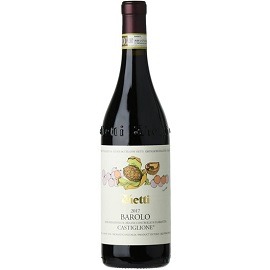Barolo has the status of Italy’s greatest red wine and is the stuff of legends. What makes Giacomo Fenocchio’s– a fifth generation producer – special is its downright drinkability even when young. Even more so when you consider his traditional and non-interventionist winemaking. Giacomo Fenocchio's Barolo Bussia is sourced from 35 year old Nebbiolo vines grown in the village of Monforte d’Alba. Long maceration (40 days) in stainless steel followed by 30 months in large Slavonian oak casks. Plenty of tar and roses on the nose, liquorice and spice on the palate and a regally long finish.
96/100 Aldo Fiordelli, Decanter, February 2023 (2019 Vintage)
"Giacomo Fenocchio is one of the producers who admitted that the 2019 vintage is for him better than the incoming rounder 2020. His Bussia plot is within the ‘Sottana’ part of one of the biggest MGAs, towards the commune of Barolo. His traditional style with submerged cap, long maceration and ageing in botti is enhanced here by graceful aromas of milk and mint, dried cherry, rose, and chalky minerality. The attack is firm but the delicacy of its amazing freshness is well integrated and lets the wine flow with balance, despite significant extraction. There's a kind of glycerol layer running over the palate, with a very sweet tannic finish. Most likely the best Bussia of 2019."
95/100 Gary Walsh, The Wine Front, July 2023 (2019 Vintage)
"Cherry, liquorice/aniseed, stony, good floral perfume, though a bolder and more deep wine, some almond. Very firm stony crushed rock tannin, but still with a certain juiciness, red fruit and aniseed, plenty of mouth-perfume, and a very tight and chalky finish of excellent length. Rippling muscularity. Top wine."
17.5/20 Walter Speller, JancisRobinson.com, November 2022 (2019 Vintage)
"Mid to deep ruby. A deep, spicy, mysterious and brooding nose. Reveals itself only slowly, slowly in the glass. Layered and complex. Still compact and backwards on the palate but finely balanced. Supple and still very tightly wound. Plenty of substance. The fruit is anchored by firm but polished tannins that go on and on."

 NZ-Wide
NZ-Wide 


 NZ-Wide
NZ-Wide Free Shipping
Free Shipping Buy Online
Buy Online












